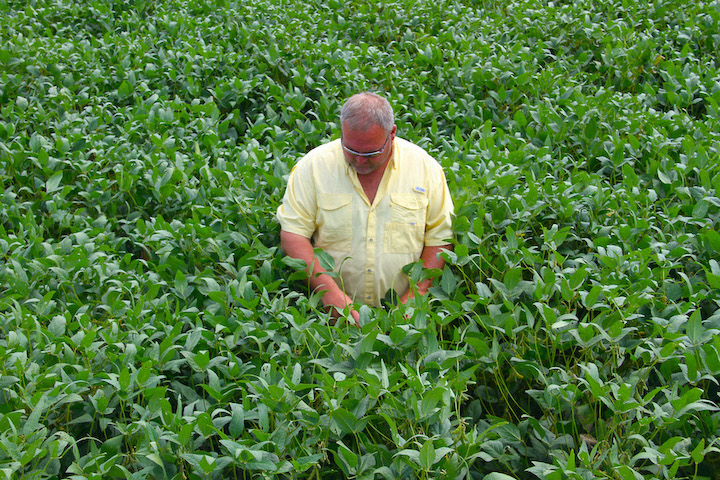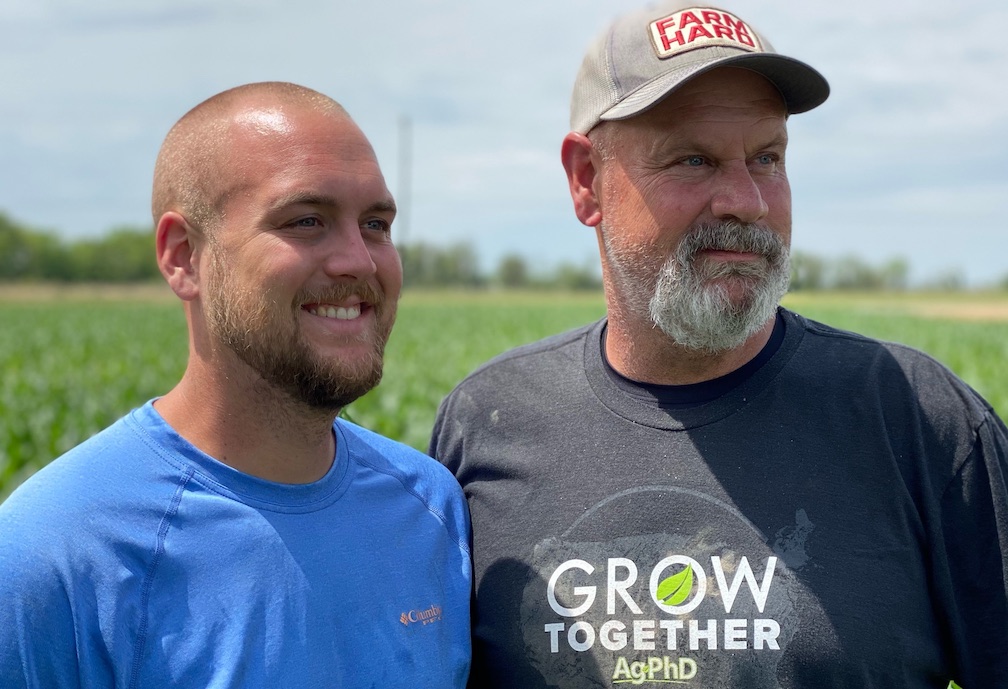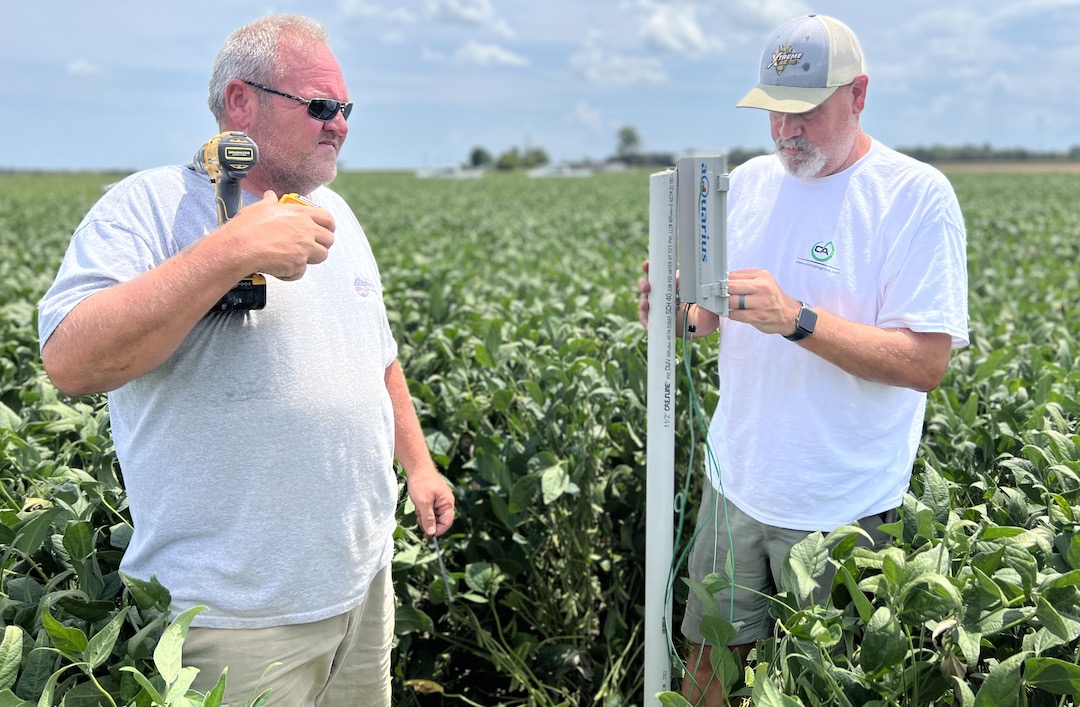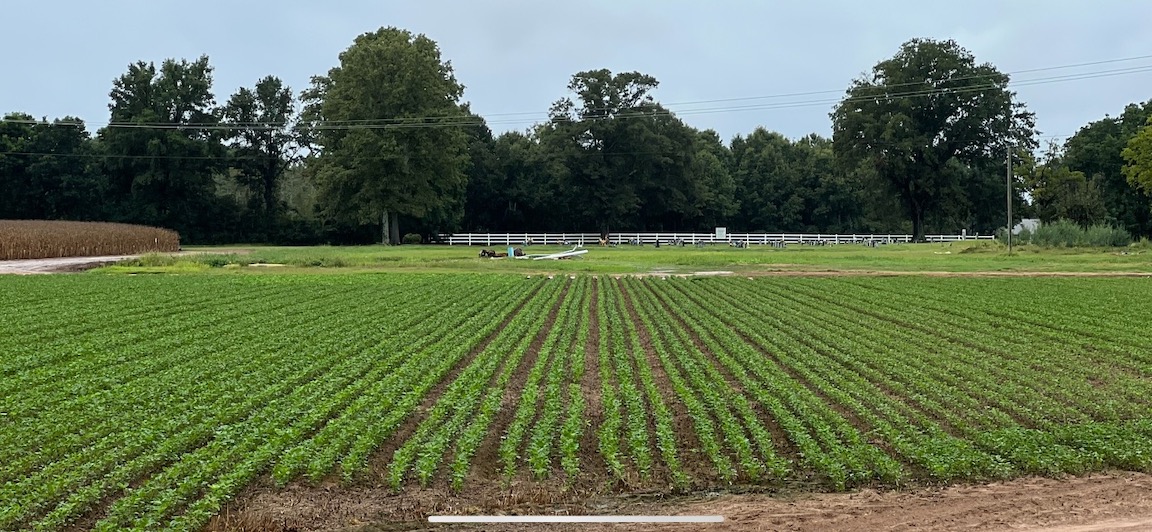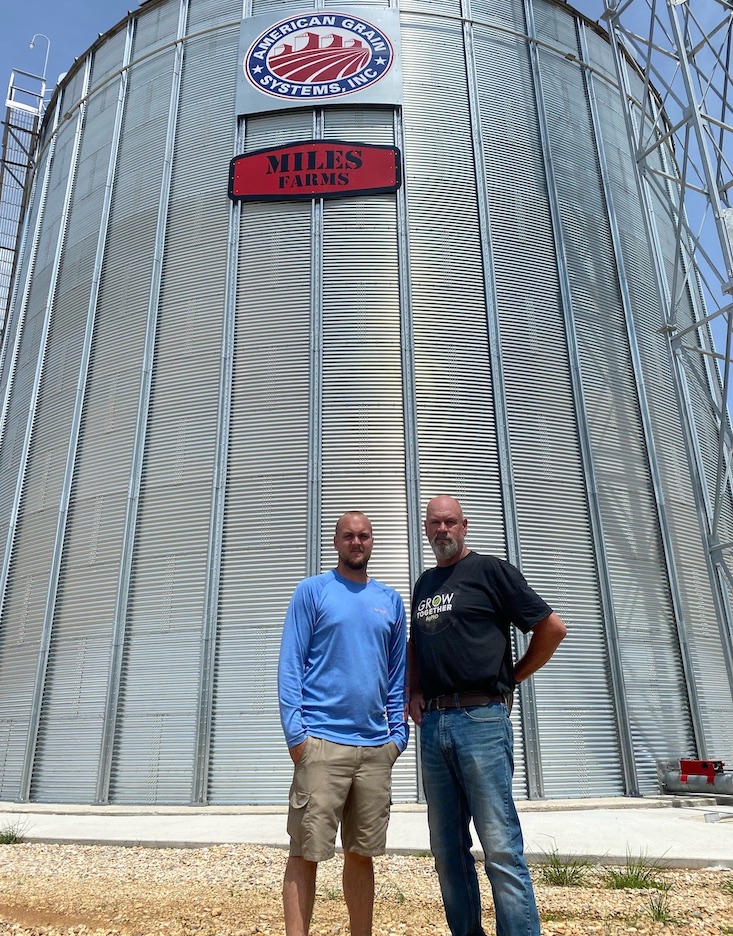Hold My Beer: Triple Crop Soybeans in Arkansas Farmer Crosshairs
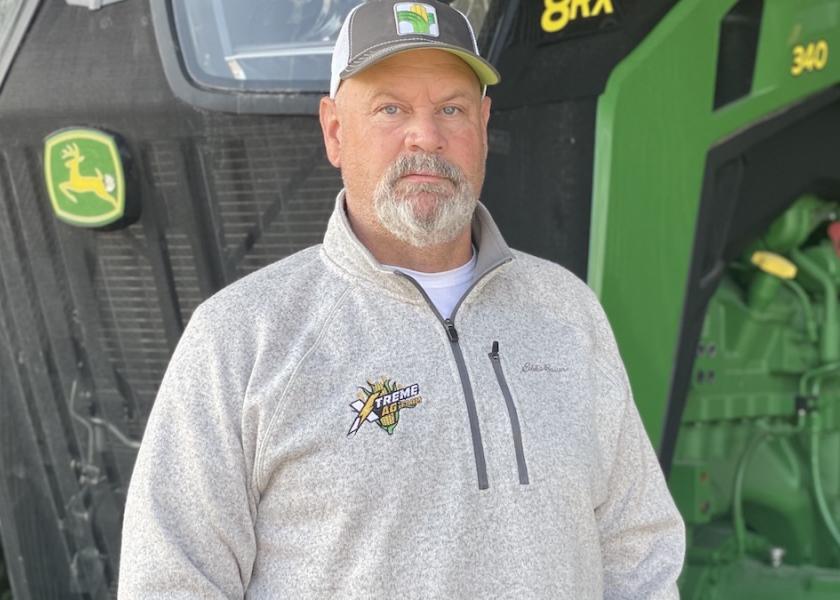
Can Matt Miles successfully pull off three crops in one year on the same field? Soybeans to soybeans to wheat? Don’t bet against a farmer whose name is synonymous with stellar yields.
Consistency is a rarity in agriculture, but at Miles Farms, a yield-linked, steady soybean trend has emerged—significantly earlier planting dates. Mid-February, anyone?
Yield sits on a three-legged stool, Miles says: “Drainage, fertility, and early planting determine yield. None of the three is more important than another, but we intend to find out how early is too early.”
Swimming Laps
On a dry Friday morning, Feb. 17, 2022, a stone’s throw outside McGehee, Ark., in the southeast corner of Razorback country, three producers argued, threw elbows in the crossfire, and jumped out of the box. Or, rather, they tore up the box and then burned the shreds.
Miles, 53, his son, Layne, 27, and consultant and fellow farmer Robb Dedman, 50, sat in their Desha County farm office, tucked into lunch, and debated the particulars of “early.”
“We need to plant early beans,” Dedman insisted, “and I mean as soon as possible.”
“What’s really early?” Miles shot back. “That’s my No. 1 question.”
“Right now,” Dedman answered. “Big beans.”
From laptop to big screen television, Miles flung the 15-day forecast on the wall and stared at one day-window of clear sailing before weather hell broke loose.
“Gotta be tomorrow if we’re going,” Layne declared.
All three heads in the room bobbed approval, and by 3 p.m., the trio decided to plant 50 acres of soybeans the following day, come what may: Get the planter plates ready, grease to go, and top the tank with fuel—lock, stock, and barrel.
“Let’s plant’em a mile off the highway,” Dedman said, hedging his bets.
“Helllllll no,” Miles answered. “Let’s do it right by the highway. We’re gonna sink or swim where everybody can see it. They can see us drown or they can see us swimming laps.”
Skin in the Game
The Miles Farms threesome is a perennial presence in Arkansas’s Grow for the Green Soybean Yield Challenge. In 2013, Miles blazed past the 100-bushel per acre line, and kept running, consistently pushing beyond 100 bushels (13 times) to ever-high yield totals—as in 121 bpa.
“I do all kind of contests, everything from Arkansas to Extreme Ag, and contest or not, if I can’t make what I’m doing work for another farmer, what is the point of 120-bushel beans without a positive ROI?” Miles asks. “Sure, you can argue that a big contest yield is showing the agronomic possibility of a bean, but who cares if you can’t pay for it? Therefore, all we do in a trial has to be acceptable to any farmer in general.”
“I want to follow beans with beans and squeeze in wheat. I’ve never heard of it in my area, but why not try? One thing for sure, if it’s possible, it all starts with an early planting date.”
On Saturday morning, Feb. 18, less than 24 hours after the farm office powwow, Miles, Layne, and Dedman rolled a planter ahead of two weeks of incoming storms and planted 50 acres of 4.1 maturity group soybeans at 150,000 population, on twin-row 38s.
At the earliest, typically, Miles rolls with soybeans in mid-March, but his planting dates continue to creep up on the calendar.
With no February planting insurance as a backup, he estimates a 40% chance of success. “If it doesn’t work, that’s life. If we get ridiculed or called stupid, so what. I’m not doing this just for my farm, because anybody in our geography or beyond can find out what happened and learn right alongside us. If this works, there’ll be valuable lessons for everyone. If this doesn’t work, it won’t be the social media haters that lose, it’ll be us. No skin off anybody’s back except Miles Farms.”
Fingers Crossed
After Miles punched seed in the ground on Feb. 18, he reckoned with much more than a few rainstorms: From planting to emergence, Desha County experienced four days below freezing and two days of snow.

However, by March 18, his 50 acres of soybeans looked strong and stood at a final population of roughly 130,000. In retrospect, Miles believes an adequate planting population might have been as low as 130,000-140,000. “I had to play it safe and go with 150,000 because of the February weather extremes. I believe you never skimp on planting soybeans, especially in a trial, because it can throw all your efforts out the window.”
In 2013, the first year Miles broke 100-bushel soybeans, he planted at 170,000. “The data has changed things and shown you can lower your population and get an equal or even higher yield,” he notes. “Bean farmers have proven high population isn’t necessary in the right circumstances.”
Seemingly every year, Miles pulls back planting dates by a week and sees a steady bump in yields. However, he never plants according to a specific date or population. Rather, he allows the 15-day forecast to dictate the numbers. “If the forecast is favorable, I move up the date, decrease the rate, and constantly tweak.”
“Let’s say we made 90 bushels per acre on 500 acres in 2020 and 90 bushels planted on a different 500 in 2021. Great numbers, but what happens the following year on those same pieces of ground? Maybe one field is an 80 and the other is a 90. I compare by year, and I compare what the beans yield on the same ground the next time around. Right now, I would never recommend someone plant in February, but if I pull this off three years in a row, I just might.”
Early planting is a boon to weed control, Miles emphasizes, particularly in a region plagued by Palmer amaranth. On average, spring weeds pop up in Desha County toward the end of March. “If we plant before the weeds emerge, we don’t need to put out pre-emerge,” Miles explains. “It’s not the normal business model because we avoid pigweed. There’s no agitation from pre-emerge, which is normally hard on beans when they are seedlings. Take cold weather, plus pre-emerge soaking down on seed, and that’s where some stand damage comes in, but you usually have no choice when fighting pigweed.”
All things agronomic considered, what end-of-July yield did Miles, Layne, and Dedman expect from the 50 acres of early-planted soybeans? Fingers crossed: 75-85 bushels per acre.
What Rules?
On July 29, the combine rolled, revealing a stout haul in the dead-center of the wheelhouse—79.46.
On July 31, Miles planted a 3.1 soybean, aiming to cut the second crop in time to plant wheat in November. “We’re not so concerned with a complete canopy, because after harvesting the first beans, we’ve got to keep the ground clean anyhow. Either way, we’ve got 60 days of weed emergence and herbicide costs staring us in the face. This may end up being the latest field in our area and every insect in the county is gonna come running. Insects will be a major concern, as will be getting a bean tall enough to make any yield.”
Prior to the second crop of soybeans, Miles considered 90-day corn, but decided against frost and high-moisture battles. “I was sure tempted to go corn, but Aug. 1 and beyond is asking for trouble. It’s so hard to get it ready and so tough to get it to dry down. It won’t black-layer past October here—at least in theory.”
Once the second soybeans are cut in early November, the learning curve will continue for Miles, and he’ll take several cues from Alabama grower Chad Henderson—a highly respected soybean and wheat producer. “Chad is a state-record grower and is kind of our winter wheat coach. I hope to plant from Nov. 15-25, but nothing is set in stone. When you’re trying something brand new, sometimes you make up the rules as you go along.”
No Secrets
A triple crop may be unprecedented at Miles Farms, but unorthodox research is par for the course. “We do higher production cost trials,” Miles explains. “Just with Extreme Ag I’ve got about 40 different trials, all from 30-50 acres, totaling 300 piggybacked acres of test products. I can’t afford to let a single year go by without learning from a bunch of trials.”
Miles’ father, Charles, held a deep maverick streak during the 1980s to early 1990s, in an era when money was typically spent on nitrogen, phosphorus, and potassium—and almost everything else was considered snake oil in many quarters.
Charles jumped on Pix, for example, and became one of the first farmers in the Delta to use plant growth regulators in cotton during the early 1980s. “My dad was not afraid to go, and he wasn’t afraid to hold back,” Miles recalls. “When I was just getting started, I decided to plant a hot variety across 500 acres. Dad advised me to look twice and just plant 10%. Right there and many other times he saved me big money in my green years. I got my original trialing idea from him, and then ran with it.”
When Miles linked up with the nonconformist approach of Robb Dedman, the on-farm research went into high gear.
In 2012, Miles and Dedman took their first shot at 100-bushel soybeans—and undershot the target by 17 bushels. Gun-shy and bruised, Miles drew a line in the sand: No more contests.
Dedman, however, bulldogged the bushel possibility, and entered Miles in the contest on the sly. “Robb entered me anyway, and I told him right then, ‘If we’re gonna do it again, then no extras. We make what we make.”
Indeed. Miles and Dedman hit 107.63 bushels, shattering the Arkansas state record.
But as soon as Miles hit the 107-mark, he heard the inevitable whispers suggesting the bin-buster was anomalous and unrepeatable. Miles’ response? “Hold my beer. We pumped our contest money back into research, changed the variety, and watched the yields keep going up.”
Once again, the conventional chatter began: Any farmer can get 100 bushels of soybeans by throwing the kitchen sink at the field. “No sir,” Miles says. “I put the same thing on my poorest ground as I did on the test ground. I go back to high yield: It means different things to different people. If you’re on 50-bushel ground and hit 75, maybe you’re doing far better than me if I’m on 80-bushel ground making 100. People get hung up on the high number, but it’s about what you can do on the soil God has provided you with.”
Miles is not afraid to stumble. Failure, he advises, is an absolute necessity of farming. He estimates 60% of his agronomic knowledge comes through failure, and 40% derives from success.
“Two years ago, we put out several hundred pounds of ammonium sulfate. Didn’t pay. We spent an extra $150 bucks per acre and it didn’t pay out. I put the lesson in my pocket and moved on.”
In 2022, success or failure, Miles is attempting a feat few would dare—three crops in one go.
“Am I going to fail at a triple crop, something that’s maybe never been done here? I’m going to learn either way and I’m going to let other farmers know what does or doesn’t work. That’s why the field sits on the highway. Nobody has to call and ask for the details—they can drive by and take a look. No secrets.”
To read more stories from Chris Bennett (cbennett@farmjournal.com — 662-592-1106), see:
Cottonmouth Farmer: The Insane Tale of a Buck-Wild Scheme to Corner the Snake Venom Market
Tractorcade: How an Epic Convoy and Legendary Farmer Army Shook Washington, D.C.
Bagging the Tomato King: The Insane Hunt for Agriculture’s Wildest Con Man
How a Texas Farmer Killed Agriculture’s Debt Dragon
While America Slept, China Stole the Farm
Bizarre Mystery of Mummified Coon Dog Solved After 40 Years
The Arrowhead whisperer: Stunning Indian Artifact Collection Found on Farmland
Where's the Beef: Con Artist Turns Texas Cattle Industry Into $100M Playground
Fleecing the Farm: How a Fake Crop Fueled a Bizarre $25 Million Ag Scam
Skeleton In the Walls: Mysterious Arkansas Farmhouse Hides Civil War History
US Farming Loses the King of Combines
Ghost in the House: A Forgotten American Farming Tragedy
Rat Hunting with the Dogs of War, Farming's Greatest Show on Legs
Misfit Tractors a Money Saver for Arkansas Farmer
Government Cameras Hidden on Private Property? Welcome to Open Fields
Farmland Detective Finds Youngest Civil War Soldier’s Grave?
Descent Into Hell: Farmer Escapes Corn Tomb Death
Evil Grain: The Wild Tale of History’s Biggest Crop Insurance Scam
Grizzly Hell: USDA Worker Survives Epic Bear Attack
Farmer Refuses to Roll, Rips Lid Off IRS Behavior
Killing Hogzilla: Hunting a Monster Wild Pig
Shattered Taboo: Death of a Farm and Resurrection of a Farmer
Frozen Dinosaur: Farmer Finds Huge Alligator Snapping Turtle Under Ice
Breaking Bad: Chasing the Wildest Con Artist in Farming History
In the Blood: Hunting Deer Antlers with a Legendary Shed Whisperer
Corn Maverick: Cracking the Mystery of 60-Inch Rows


